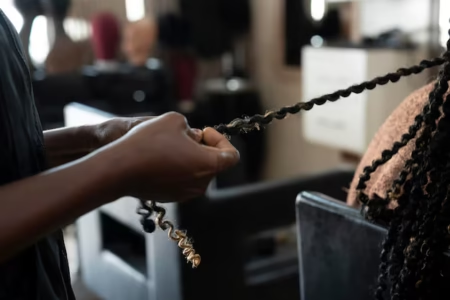Understanding consent in the BDSM community is crucial in the safe practice of this erotic sort of game. Also, BDSM is all about rules, as all have to be consented during the play.
BDSM, a variety of erotic practices involving dominance and submission, role-playing, restraint, and other interpersonal dynamics, often dwells in fantasy. It is a lifestyle and personal expression different from mainstream sexual activities. One significant principle underpinning the BDSM community is the importance of informed and enthusiastic consent, establishing clear boundaries and ensuring the safety of all involved.
You might see BDSM play in movies, but in reality, some boundaries are to be firmly placed.
Especially for those at their first BDSM experience, understanding the community practice has to be a must. The way you learn to play at the beginning of your sexual journey is the way you continue all your life. This is why understanding the best practice and the limits of the games is crucial.
What is Consent in BDSM?
In its most basic form, consent is an agreement between people to engage in a specific activity. It’s an active, ongoing process that involves clear communication and mutual respect. In a BDSM context, consent separates BDSM play from non-consensual abuse or violence. It’s crucial to ensure that all BDSM activities are safe, sane, and consensual, often abbreviated as SSC or risk-aware consensual kink (RACK).
Consent is like a contract, if you want to understand it better, where one or both partners consent to a particular practice. Yes, exactly like in any other case, contracts have exceptions and rules, which is also what BDSM is all about.
Below we will see some exceptions to the consent in BDSM. We will see when the former consent can be withdrawn during the play, as one partner experiences more than he was willing to.
Informed and Enthusiastic Consent
Informed consent in the BDSM context implies that all parties fully understand the activities they agree to. They should be aware of potential risks, have agreed on safe words or gestures, and understand their rights to stop the scene at any time. Enthusiastic consent refers to an active and ongoing agreement where all parties are excited and happy to be involved.
Safe words and gestures are vital, and we say vital in the very definition of the keyword. Some plays hurt the partner, and they should be able to express their willingness for the play to stop. Words or gestures should express this, as sometimes one or the other is impossible to be expressed.
So, while starting enthusiastically, both partners should also set boundaries regarding safe words and gestures.
Negotiation in BDSM
Negotiation is a critical aspect of BDSM and forms the basis of consent. All parties discuss their desires, limits, risks, and safety measures during this process. This conversation also involves agreeing on safe words or signals. The more detailed the negotiation, the better-equipped everyone is to ensure a safe and enjoyable scene. It’s important to note that anything not agreed upon during negotiation is off-limits during the scene.
It is also possible for the negotiation to happen not only before but also during the play. But both partners should understand that this is a negotiation, such as when any partner agrees to discover their limits, and the other should be aware of any safe words or gestures to stop playing.
Negotiation means that no partner should be left with the impression it offered or gave too much, as in negotiation, both parties should win.
Soft and Hard Limits in BDSM
In BDSM, limits refer to activities that a participant is uncomfortable with. Soft limits are activities a person may be hesitant about but might be willing to try under specific circumstances. On the other hand, hard limits are non-negotiable. They are activities that a person is unwilling to participate in, which must always be respected.
So, the soft limits happen during the dynamic negotiation between the partners. It’s when one partner doesn’t know his or her limits and wants to try but with the possibility to signal the other to stop the play at any moment.
Safe Words
Safe words are pre-agreed phrases that anyone can use to pause, slow down, or stop a scene immediately. They are critical safety tools that protect all parties involved. Green, yellow, and red are often used, representing “everything is okay,” “slow down,” and “stop,” respectively.
Also, other words are used by the BDSM community, but this is up to each couple. However, both parties should clearly understand these safe words, as they have the ultimate power during the consented play.
Revocable Consent
During BDSM playing, both partners have to understand that the consent is revocable. One initial consent might be revoked if the partner who initially agreed discovers that the practice surpasses his or her limits.
Importantly, consent in BDSM is revocable. This means that even after giving initial consent, anyone can withdraw that consent at any time for any reason. When a scene becomes too intense, or someone is uncomfortable, they can stop the activity immediately by saying safe words or making a gesture.
Aftercare in BDSM
Aftercare is not to be thought of in medical terms, but if something happens that needs medical attention, one should always ask for it that very moment.
Aftercare refers to the time and attention given to the participants after a scene. It involves comforting, discussing the scene, addressing negative feelings, and reaffirming consent. Aftercare is vital for ensuring the well-being of everyone involved, and neglecting it can lead to adverse emotional reactions.
Consent Violations
A violation of consent, also known as a consent incident, happens when agreed boundaries are overstepped. In BDSM, these are serious offences. The community typically handles such violations through peer-to-peer networks, holding individuals accountable for their actions. Consent violations can lead to banishment from community events, public shaming, or, in severe cases, legal action.
It is within communities and your relationship; if your partner crosses the boundaries, let him know and strengthen any rule between you two.
Conclusion
Consent is at the heart of BDSM. It differentiates BDSM activities from abuse, ensuring they remain enjoyable explorations of power dynamics, role-play, and sensation. By ensuring open communication, mutual respect, understanding, and active agreement, the BDSM community creates a safer space for these practices. As mainstream culture becomes more aware of and open to BDSM, it’s essential to focus on these consent principles. With a thorough understanding of consent, BDSM can be a fulfilling and positive aspect of one’s sexual identity.
For those looking for BDSM gifts for your partner, you can see some good choices in the link. Also, we prepared a BDSM kit with all it needs for a couple to try and experiment with BDSM at home.
Enjoy!












